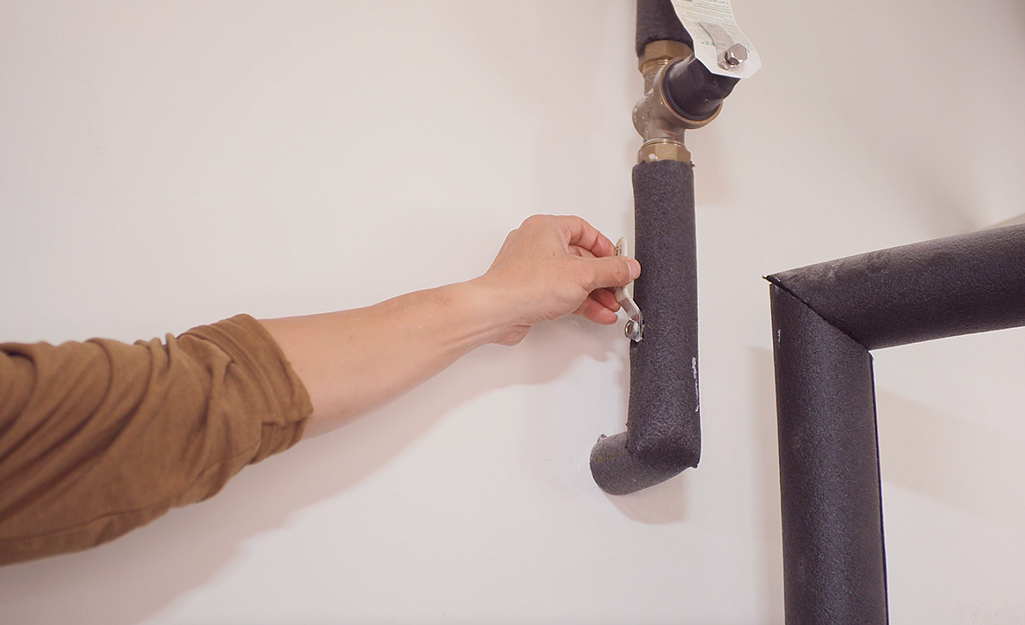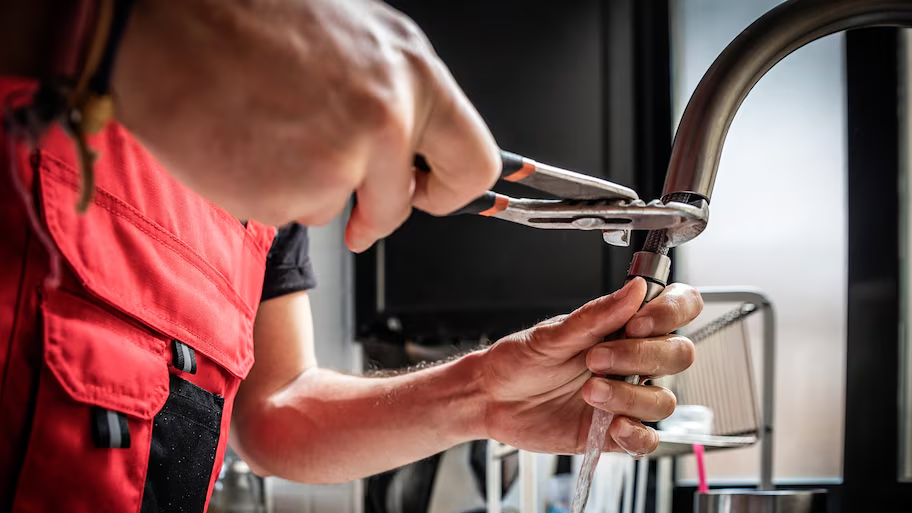We've uncovered the article about Should I Repair or Replace a Leaky Faucet? listed below on the internet and decided it made perfect sense to talk about it with you on my blog.

Dripping taps might appear like a minor hassle, but their influence goes beyond simply the inconvenience of the sound. From wasting water to incurring unnecessary economic costs and health risks, overlooking a trickling faucet can result in different effects. In this write-up, we'll look into why it's essential to address this typical family problem immediately and successfully.
Waste of Water
Environmental Influence
Trickling taps contribute substantially to water wastage. According to the Environmental Protection Agency (EPA), a solitary tap leaking at one drip per second can throw away greater than 3,000 gallons of water annually. This not just stress water resources yet also influences environments and wildlife depending on them.
Step-by-Step Guide to Dealing With a Dripping Faucet
Devices Needed
Prior to attempting to deal with a dripping tap, collect the required tools, consisting of a flexible wrench, screwdrivers, replacement components (such as washing machines or cartridges), and plumber's tape.
Common Tap Issues and Their Solutions
Recognize the type of faucet and the certain concern causing the drip. Typical issues include worn-out washers, corroded shutoff seats, or damaged O-rings. Refer to manufacturer directions or on-line tutorials for step-by-step assistance on repair work.
Financial Expenses
Enhanced Water Bills
Beyond the environmental impact, dripping taps can pump up water expenses substantially. The accumulated wastefulness with time translates into higher utility expenses, which might have been avoided with prompt fixings.
Prospective Building Damage
Furthermore, prolonged leaking can lead to harm to components and surfaces bordering the tap. Water accumulation can trigger discoloration, deterioration, and even structural problems if left neglected, causing added repair work expenses.
Health and wellness Issues
Mold And Mildew and Mildew Growth
The constant existence of wetness from a dripping faucet produces an excellent setting for mold and mold development. These fungi not only compromise indoor air quality but additionally posture health and wellness dangers, especially for individuals with respiratory problems or allergic reactions.
Waterborne Diseases
Stationary water in leaking faucets can come to be a breeding ground for bacteria and various other pathogens, raising the danger of waterborne conditions. Pollutants such as Legionella microorganisms flourish in stationary water, possibly causing serious health problems when ingested or inhaled.
Do it yourself vs. Professional Fixing
Advantages and disadvantages of Do It Yourself Repair Service
While some may try to take care of a trickling tap themselves, DIY repair work include their own collection of difficulties. Without proper knowledge and tools, DIY attempts can aggravate the issue or result in incomplete repair work, lengthening the issue.
Benefits of Employing an Expert Plumber
Hiring a professional plumber makes certain that the underlying source of the dripping faucet is addressed efficiently. Plumbings possess the knowledge and equipment to diagnose and fix tap concerns effectively, conserving time and reducing the threat of more damages.
Environmental Obligation
Private Payment to Preservation
Taking responsibility for taking care of leaking faucets straightens with more comprehensive initiatives towards water preservation and ecological sustainability. Every individual's actions jointly make a considerable impact on maintaining valuable resources.
Lasting Living Practices
By prioritizing punctual repairs and taking on water-saving practices, individuals add to sustainable living methods that benefit both present and future generations.
Safety nets
Routine Maintenance Tips
To avoid leaking taps, carry out routine upkeep such as cleaning up aerators, examining for leaks, and changing worn-out parts immediately. Furthermore, consider mounting water-saving devices or updating to much more efficient components.
Significance of Prompt Repair Works
Addressing leaking taps as soon as they're discovered protects against further water waste and possible damages, ultimately saving both water and cash in the future.
Impact on Residential Or Commercial Property Value
Understanding of Well-Maintained Building
Maintaining a residential property in good condition, consisting of addressing upkeep concerns like trickling taps, boosts its regarded worth and worth amongst prospective purchasers or renters.
Influence on Resale Value
Characteristics with properly maintained plumbing fixtures, consisting of faucets, command greater resale values in the realty market. Resolving trickling taps can add to a positive impact throughout residential or commercial property assessments and settlements.
Conclusion
Resolving a leaking tap goes beyond plain comfort; it's a vital step towards conserving water, minimizing monetary expenses, and protecting health and property. Whether through DIY repair work or professional aid, doing something about it to take care of leaking taps is a small yet impactful method to advertise responsible stewardship of resources and contribute to a much healthier, extra sustainable future.
How to Fix a Leaky Faucet: Step-by-Step Repair Guide
A leaky faucet may seem like a simple annoyance, but if it's not fixed promptly, that leak could cost hundreds to potentially thousands. From water damage to mold, mildew, and high water bills, even a tiny leak can be catastrophic if left unattended. Damage like this can even affect the overall value of your home, so it's important to take the right approach for leaky faucet repair. You may need the help of a plumber in some cases, but we've got a few tips you can try on how to fix a leaky faucet before calling the pros.
Four Faucet Types
When you're learning how to fix a leaky faucet, the first step is knowing what kind of faucet you're working with! There are four common types.
Cartridge Faucets
Cartridge faucets come in one- or two-handled varieties. In one-handled cartridge faucets, hot and cold water combines in a single cartridge. In the two-handled versions, hot and cold water are controlled separately and mixed in the faucet.
Ball Faucets
Ball faucets have a single lever you push up and down to adjust the pressure and rotate to change the temperature. A slotted metal ball controls the amount of water allowed into the spout.
Compression Washer Faucets
They're the oldest type of faucet, but they're still used in many homes — especially older ones. Compression faucets have two separate handles that, when turned, raise or lower the washer that seals a water valve. This valve stops water from flowing through the faucet when it is turned off.
Disc Faucets
Disc faucets rarely need to be repaired due to their maintenance-free design. The water flow is controlled by two discs — the upper one raises and lowers against a fixed lower disc, creating a watertight seal. If your disc faucet starts leaking, you may need to replace the seals or clean residue buildup from the inlets.
Fixing a Leaky Faucet
Step 1: Turn Off the Water
Whether you're learning how to fix a leaky bathtub faucet or how to fix a leaky kitchen faucet, always turn off the water supply to your working area when you're fixing a leak. The last thing you want is a flood added to your list of things to fix.
Look for the shutoff valves below your sink or around the tub and turn them clockwise to stop the water flow. If your faucet doesn't have shutoff valves, you may need to turn off the water for the whole house. Check to make sure it's off by turning the faucet on. If nothing comes out, you're ready to start the repair.
Step 2: Take Apart the Faucet
How you disassemble your faucet depends on the type of fixture you have. You can use a flathead screwdriver to remove the caps on top of the handle or handles for cartridge and compression faucets. Inside, you should see handle screws. Unscrew these with a screwdriver to remove the handle.
Disc- and ball-style faucets will typically have an inlet screw near the handle, and removing that will reveal the interior of the faucet.
Detach the Valve Stem
For cartridge- and compression-style faucets, you'll see the inner valve stem or cartridge once you remove the faucet handles. If you have a compression faucet, unscrew the brass valve stem. If you have a cartridge faucet, pull out the cartridge. If your cartridge has been in place for a while, it may require some tools or extra force to remove it due to mineral deposits.
Examine and Replace Parts
Once you've removed the parts, check them out to confirm what needs to be replaced. You may see corroded rubber washers, O-rings, stems, or cartridges. On a ball-style faucet, check the seats and springs for damage.
If you need to repair a leaky disc faucet, check the inlet and seals on the lower disc.
Once you determine what parts must be replaced, visit your local hardware store. Bring the damaged parts with you to ensure you can purchase the correct components to replace them.
Clean Valves and Faucet Cavity
If you've removed a stem or cartridge, you may notice mineral buildup in the faucet's threads. Use white vinegar to clean the valve seat by soaking it for a few minutes, then scrub it away with a soft toothbrush and rinse with warm water. You can also clean the interior of the faucet in the same way.
Reassemble the Faucet
Once your faucet is cleaned and the required parts have been replaced, it's time to reassemble it. Put the pieces back together and slowly turn the water supply back on. Doing this slowly is crucial because too much initial water pressure can damage the new hardware you've just installed.
https://homewarranty.firstam.com/blog/how-to-fix-leaky-faucet

I came across that piece about Why Are My Faucets Dripping (And Can I Fix It Myself)? while doing a lookup on the web. I beg you pause to distribute this entry if you enjoyed it. We truly appreciate reading our article about .